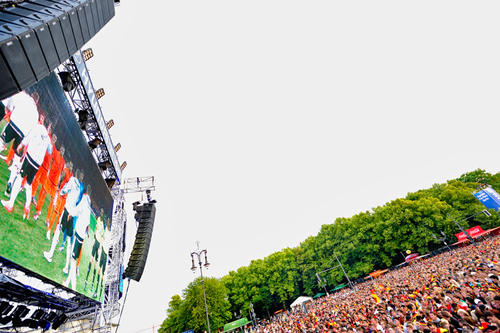Strategies for Major Emergencies
The “Safety and Security Research Showcase” features technical innovations and simulates scenarios.
Mar 11, 2015
Large-scale events present a special challenge for safety and security specialists. Researchers from Freie Universität are working on ideas they hope will improve responses and shorten response times in the event of an emergency.
Image Credit: iStockphoto-southerlycourse
A storm is moving in. There is a crack of thunder and a flash of lightning – and smoke suddenly starts to rise from the local chemical plant. Researchers from the Research Forum on Public Safety and Security at Freie Universität are now gathering ideas for possible ways to respond in this and other crisis situations. About 20 team members are working on developing the results of safety and security research for policymakers and the general public.
It is no easy task, since there are a large number of possible hazards that demand a response. At the same time, safety and security strategies affect many different areas of people’s lives. “There are a lot of components to safety and security,” says Lars Gerhold, the head of the forum. “Technical feasibility isn’t the sole deciding factor. We also have to discuss what legal issues play a role, and how we want to live as a society. That’s why we work on an interdisciplinary basis here.”
Gerhold and his team presented their results in cooperation with the Public Safety and Security Innovation Center (Innovationszentrum Öffentliche Sicherheit) at Fraunhofer Fokus on February 26 in an interactive demonstration room titled “Safety and Security Research Showcase” at Kaiserin-Augusta-Allee 31 in Berlin’s Charlottenburg district.
What makes this special is that the scenarios are not presented as academic works, but rather brought home to people in the form of simulations in a room specially prepared for this purpose. “The showcase allows visitors to experience live, in a way, what kinds of possible responses are available to us in an emergency,” Gerhold says.
Bringing Complex Contexts to Light
The researchers plan to develop simulations of various scenarios over the next few years – a pandemic, for example, or a sudden food shortage – and use these examples to present their research to vivid effect. The use of various technical materials and communication strategies in a certain risk situation will be shown on multiple screens in the “Showcase.”
To this end, Gerhold and his colleagues are developing their own scripts, telling stories such as the fictitious case of a fire at a chemical plant. “It might be that the management gets a warning notice by cell phone at home. The fire department receives the alarm and gets a camera image directly from the scene. Sensors detect where the smoke is originating and where it is going, so that it is possible to pinpoint the safest escape route. And if public space is affected, such as a subway station, monitors and advertising space can be used to display instructions for what people are supposed to do,” Gerhold explains. The “Safety and Security Research Showcase” will display these kinds of processes with a time lag on multiple monitors while also showing possible responses by those affected.
“These kinds of interactive demonstrations make it possible to bring complex contexts to light,” says Gerhold, who has a doctorate in social science. A simulation on the topic of surveillance is to be presented soon to representatives of the political sphere, academia and the research sector, the business community, and government agencies during a workshop. In the long run, however, plans call for the “Safety and Security Research Showcase” to also be accessible to a broader public.
Showing the Possibilities
“Research findings are often forgotten once a project is concluded,” Gerhold says. “Our results are supposed to be installed on a long-term basis at the ‘Showcase,’ forming a kind of archive,” he adds. Most of the technical innovations on display at the “Safety and Security Research Showcase” are not yet in use in Germany. “Future-oriented safety and security research means thinking in terms of possibilities. As for what is then supposed to be implemented in fact, that needs to be discussed,” Gerhold explains.
For now, the research forum is focusing on pointing out various approaches and reflecting on them from a critical standpoint. “Special cameras can sense when a person has been lying motionless on the floor for a long time, for example, and then set off an alarm. But they can also be used to recognize individuals,” Gerhold says. It is always necessary to consider the consequences of new technologies and to weigh the costs and benefits carefully, including at the wider societal level, he explains. “Tools like body scanners at airports are a good example. If these kinds of things are not accepted by society, their legitimacy needs to be discussed.” Not everything that is technologically feasible is also desirable, the scholar points out. “Our goal is to compile a lot of information in one place, thereby sparking public discussion of the possibilities and the risks,” he says.
Further Information
Lars Gerhold, Director, Research Forum on Public Safety and Security, Email: lars.gerhold(at)fu-berlin.de

